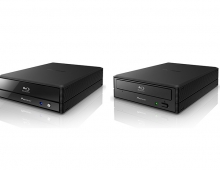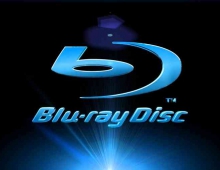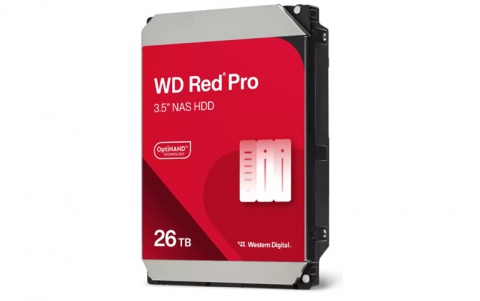
x264 Software Offers Free Blu-ray Encoding
The developers of the x264 software today took the first step towards a free software Blu-ray creation toolkit.
The latest version of the x264 software can now produce Blu-ray-compliant video.
With x264?s compression, it?s possible to author Blu-ray disks on DVD9s (dual-layer DVDs) or even DVD5s (single-layer DVDs) with a reasonable level of quality, the x264 team said.
A demo Blu-ray encoded with x264 containing entirely free content is available for download here. The 2GB disc image, which contains the Open Movie Project's Creative Commons licensed Big Buck Bunny and Elephant's Dream films. The disc is burnable onto an ordinary DVD and playable as Blu-ray disc in most Blu-ray players. It also includes documentary footage with live action content provided by Microsoft.
In accordance with the Blu-ray specifications, the disc image file uses the UDF 2.5 filesystem, which may be incompatible with some older virtual drive and DVD burning applications.
The software supprts BD audio; AC3 audio (aka Dolby Digital), the format used in DVD, is still supported by Blu-ray, and there are many free software AC3 encoders. The primary missing application is a free software Blu-ray authoring tool, to combine the video and audio streams to create a Blu-ray file structure with the menus, chapters, and so forth.
In the meantime, x264 can be used to create streams to be authored using Blu-Print, Scenarist, Encore or other commercial authoring tools.
More detailed documentation on the new Blu-ray support and how to use it can be found in the official commit message. Do keep in mind that you have to export to raw H.264 (not MKV or MP4) or else the buffering information will be slightly incorrect.
In addition, x264 now has native variable-framerate ratecontrol, which makes sure your encodes get a correct target bitrate and proper limiting of maximum bitrate even if the duration of every frame is different and the "framerate" is completely unknown. This helps a lot when encoding from variable-framerate container formats such as FLV and WMV, along with variable-framerate content such as anime.
The software also now supports pulldown (telecine) in much the same fashion as it is handled in MPEG-2. The calling application can pass in flags representing how to display a frame, allowing easy transcoding from MPEG-2 sources with pulldown, such as broadcast television. The x264 commandline app contains some examples of these (such as the common 3:2 pulldown pattern).
x264 also exports HRD timing information, which is critical for compliant transport stream muxing. There is currently an active project to write a fully DVB-compatible free software TS muxer that will be able to interface with x264 for a seamless free software broadcast system. It will likely also be possible to repurpose this muxer as part of a free software Blu-ray authoring package.
A demo Blu-ray encoded with x264 containing entirely free content is available for download here. The 2GB disc image, which contains the Open Movie Project's Creative Commons licensed Big Buck Bunny and Elephant's Dream films. The disc is burnable onto an ordinary DVD and playable as Blu-ray disc in most Blu-ray players. It also includes documentary footage with live action content provided by Microsoft.
In accordance with the Blu-ray specifications, the disc image file uses the UDF 2.5 filesystem, which may be incompatible with some older virtual drive and DVD burning applications.
The software supprts BD audio; AC3 audio (aka Dolby Digital), the format used in DVD, is still supported by Blu-ray, and there are many free software AC3 encoders. The primary missing application is a free software Blu-ray authoring tool, to combine the video and audio streams to create a Blu-ray file structure with the menus, chapters, and so forth.
In the meantime, x264 can be used to create streams to be authored using Blu-Print, Scenarist, Encore or other commercial authoring tools.
More detailed documentation on the new Blu-ray support and how to use it can be found in the official commit message. Do keep in mind that you have to export to raw H.264 (not MKV or MP4) or else the buffering information will be slightly incorrect.
In addition, x264 now has native variable-framerate ratecontrol, which makes sure your encodes get a correct target bitrate and proper limiting of maximum bitrate even if the duration of every frame is different and the "framerate" is completely unknown. This helps a lot when encoding from variable-framerate container formats such as FLV and WMV, along with variable-framerate content such as anime.
The software also now supports pulldown (telecine) in much the same fashion as it is handled in MPEG-2. The calling application can pass in flags representing how to display a frame, allowing easy transcoding from MPEG-2 sources with pulldown, such as broadcast television. The x264 commandline app contains some examples of these (such as the common 3:2 pulldown pattern).
x264 also exports HRD timing information, which is critical for compliant transport stream muxing. There is currently an active project to write a fully DVB-compatible free software TS muxer that will be able to interface with x264 for a seamless free software broadcast system. It will likely also be possible to repurpose this muxer as part of a free software Blu-ray authoring package.




















